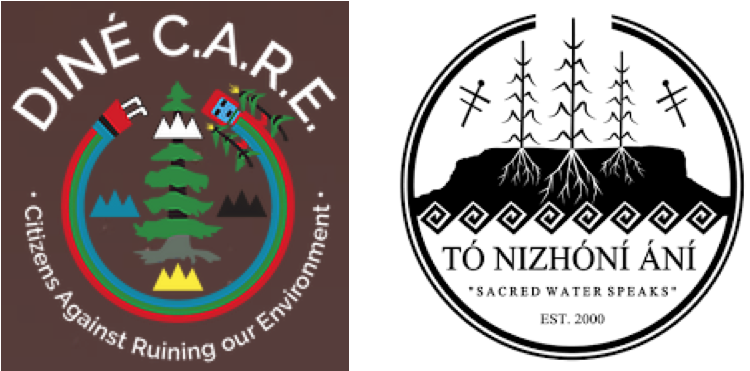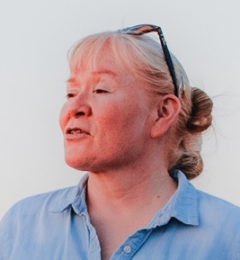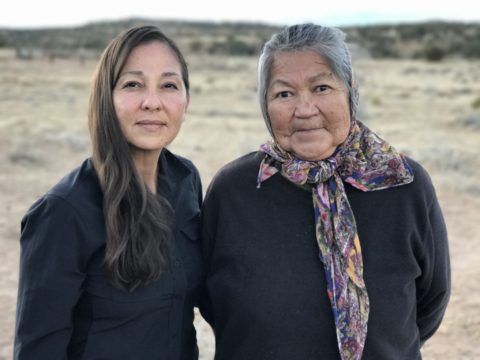
Following generations of farmers, sheepherders, and medicine people, Nicole Horseherder grew up in the highlands of Black Mesa on the Navajo Nation in Arizona, in a stark landscape punctuated with juniper, pinon pine trees, and sagebrush. Her grandfather was a traditional healer and chanter, a keeper of ceremonies. Like her ancestors before her, she cares deeply about the land she calls home, the welfare of her people, and opportunities for future generations.
After leaving home to attend college and grad school, Nicole returned to her community, started looking for a job, and studied the land where she hoped to build a house someday. On a walk with her grandmother, she noticed that a nearby spring was gone, dried up. Others had gone dry, too, as long as 10 years ago.
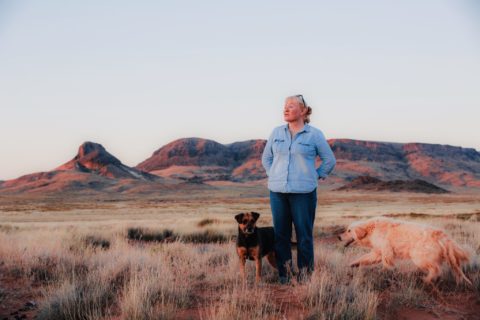
Carol Davis also has lived on the Navajo Nation her entire life, except when she was away at school. Upon her return, she worked for 17 years as a public administrator for the Dilkon Chapter of the Nation, where she coordinated social and environmental justice efforts, engaged her community in advocating for equitable water rights, and coordinated natural resource conservation efforts and recycling, while promoting government accountability throughout the administration of public resources.
These two women lead organizations that, working in coalition with others, secured the planned closure this December of the Navajo Generating Station (NGS)—the largest coal-burning power-plant in the West—and discouraged tribal leaders from purchasing and continuing its operation. Since 2015, Carol has served as the coordinator for Diné C.A.R.E. (Citizens Against Ruining Our Environment), which seeks to empower, give voice to, and protect the interests of Diné (Navajo) communities. Diné means, roughly, “the people.” Nicole is executive director of Tó Nizhóní Ání, whose mission is to preserve and protect the environment, land, water, sky, and people, and advocate for the wise and responsible use of the natural resources of the Black Mesa region.
Using a variety of tactics—including grassroots organizing, regulatory proceedings, protests, education, and litigation—these women have been working to ensure that the Navajo Nation transitions from decades of over-reliance on coal as an economic engine, to more affordable and sustainable sources of energy that don’t pollute Navajo air, land, and water—and that are in line with Diné fundamental principles. After years of effort, they were rewarded in early 2017 when the utilities that own NGS— Salt River Project, Arizona Public Service Co., Tucson Electric Power, and NV Energy—announced they planned to close the plant in December 2019 because it was no longer economic to keep it running. There was light at the end of the tunnel for Navajo Nation residents who for decades have suffered from impacts to their air, exposure to coal ash, and exploitation of precious water resources. According to Stanford’s Water in the West, more than 8,000 homes on Navajo lands lack access to drinking water, and according to federal data, there are still more than 18,000 Navajo homes—a third of the population on the reservation—without access to electricity.
Their hope was tempered when Avenue Capital, a New York City-based equity investment firm, announced it intended to pursue purchase the plant and entered into negotiations with Navajo Nation leadership. The Nation already had struck a deal with the plant’s owners that gave the tribe access to 500 megawatts of the transmission line and water rights or access to water, along with numerous other assets and substantial cash payments. The status of that agreement was in jeopardy.
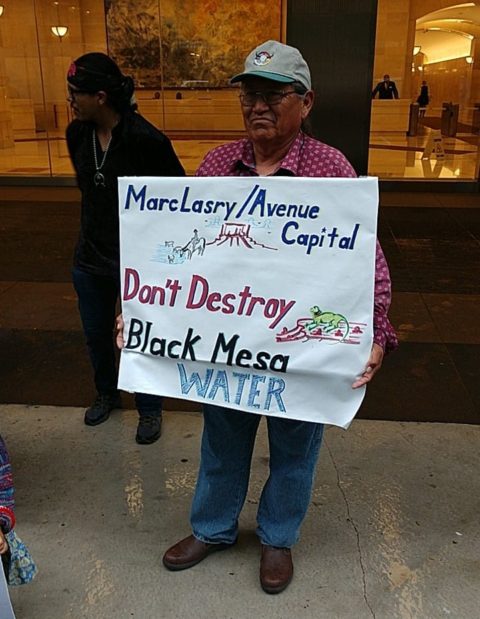
Over the summer, the groups expressed their concerns and objections to Avenue CapitalCEO Mark Lasry in letters sent in May and June. And in September, Tó Nizhóní Ánía led a group of more than a dozen Navajo who traveled 2,000 miles to New York City to protest in front of Avenue Capital headquarters. In September 2018, Avenue Capital, along with its subsidiary, Middle River Power, backed off of the purchase, saying they could not get anyone to commit to buying power from the plant.
This success was quickly followed by another threat. After Avenue dropped its bid to buy the plant, a Navajo enterprise that owns another coal mine and minority share in another coal plant, announced it was contemplating investments to continue the coal mine and power-plant operation. The groups thwarted this effort, too, by educating residents about the benefits of transitioning away from fossil energy and exploring alternative sources of jobs and income—in particular from solar-power generation—and mobilizing them to show up at council meetings and voice their opinions.
In fact, one of the challenges faced by Tó Nizhóní Ání and Diné CARE is getting willing speakers to the venues where their voices can be heard.
“We don’t want people to worry about the expense of gas, or logistics, or how to get into a building—many of our elders don’t read, write, or drive,” said Nicole. “One of our major strengths is helping people show up. In 2016, when there was a Peabody coal company bankruptcy hearing in St. Louis, Missouri, we went house to houses and got people to commit to go. I was in charge of securing hay, because many said they’d go but had sheep that would have to be penned while they were away. So it was my job to make sure hay was bought, dropped off at their place, and someone went to feed them daily while we were in St. Louis.”
“You need to meet people at the hogan level, sit with them at their fireplace, and allow them the opportunity to talk,” says Carol. “You may go to a person’s home to look at water or power lines and sit for three hours listening to a person’s story. That’s just how it’s done. It’s a long process, literally one-on-one with people.”
And it pays off.
“There are many approaches to activism, from educating neighbors or protesting, to weighing in on a proposal or a negotiation,” says Energy Foundation’s Shannon Raborn, Program Director for West Campaigns. “Having people from the Navajo Nation show up and speak to their concerns has been hugely influential in this case.”
“And they have persevered,” adds Katie McCormack, Energy Foundation’s Program Director for West Policy. “Diné CARE and Tó Nizhóní Ání have been steadfast voices for their communities for years, and led efforts through multiple shifts in strategy. They demonstrate leadership and creativity on the Navajo Nation, effectively taking their case to the Arizona Corporation Commission, New York, and Washington, D.C.”
Next for the two organizations is a strong focus on the transition from coal to clean energy and a more sustainable economic future than coal can provide. That means continuing to push for support for impacted workers and transition funding commitments from utilities, holding the owners of the power plant and Peabody accountable for the cleanup at the two sites, and ongoing efforts to smooth the way for accelerating the pace of clean energy development on the Navajo Nation. It means lots of additional trips to Navajo communities, outreach to Navajo Nation Council delegates (already there has been a lengthy debate about revamping the Nation’s energy policy with one focused on a renewable energy future), and meetings with everyone from Congressional representatives and regulators to chapter presidents and sheepherders.
Carol says the next steps for Diné CARE are ensuring adequate decommissioning at both NGS and Kayenta Mine and promoting solar power and other job-creating projects. Nicole says the groups must also focus on bringing in more organizers, including young people.
“You are going to be taking over this job,’ we tell them. ‘You must learn to advocate for yourselves, for the Nation.’ “
